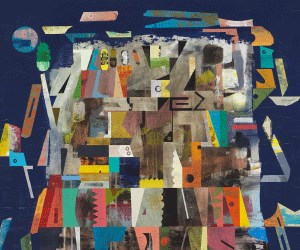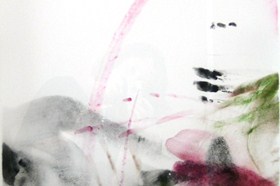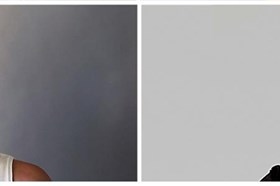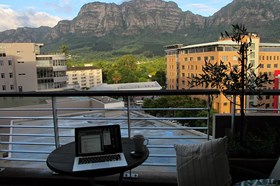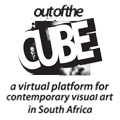other reviews
'Women'
Makiwa Mutomba at artSPACE durban
By Peter Machen25 January - 19 February. 0 Comment(s)
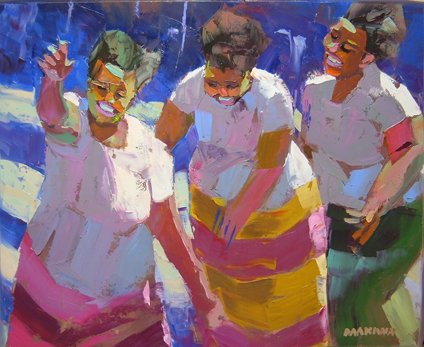
Makiwa Mutomba
The Joyful Trio,
2009.
oil on canvas
80 x 100cm.
I first came across the work of Zimbabwean painter Makiwa Mutomba a few years ago, at the KZNSA, where he presented a series of portraits produced in brightly contrasting hues, and rendered in an apparently rough impressionism. At the time I was struck by Mutomba's distinctive style and its pop sensibility, and those portraits continue to lurk in my visual memory despite the fact that I never gave the exhibition the examination it deserved.
In Mutomba's latest exhibition, at artSPACE Durban, the body of work on display is more expansive, moving beyond the front-on portrait to embrace movement and an exquisite grasp of body language. In 'Women' Mutomba presents various scenes in which a diversity of African women fill the frames. They are mostly presented in groups of three or four, their physical composition utterly familiar to anyone who's looked around at the human landscape of South Africa, even as the images stand firm against any suggestion of the generic. Mutomba's women are recognisable precisely because he gives them a specificity, rather than making them stock characters.
art events calendar
VIEW FULL CALENDARbuy art prints
edition of 25: R3,500.00
About Editions for ArtThrob
Outstanding prints by top South African artists. Your chance to purchase SA art at affordable prices.
FIND OUT MORE Editions for artthrobLike his other work, Mutomba's brush strokes here verge on the brutal, and his use of colour is similarly intense. And yet the result is paradoxically precise, overflowing with tenderness for its subjects. Standing not too far from the canvas, one can't help but notice how real the women are; there is an energy in their eyes and their bodies that is also reflected in their relationships to each other.
I was also truck by how photographic the work is in its construction, including the presence of depth of field and the photographic crop rather than a more traditionally painterly construction. This is something doens't really register at first, but it's a telling mark of the artist's accuracy and his contemporaneity. That he uses such broad strokes and such apparently unrealistic colours to build such a resonant realism make the work all the more remarkable.
At the same time, however, I sense that the eyes of many viewers might glide over Mutomba's paintings of African women, seeing them as an extension of African curio painting rather than in the context of modern art. The South African artistic landscape is littered with portraits of African women but Mutomba, with his idiosyncratic style, paints in contradistinction to the curio image. I have said elsewhere that these women are unique, and it's a point I can't help repeating.
In the ongoing discussion of alternative modernities, Mutomba's works have much value, expressing a complex dialogue across time and continents. His work is essentially impressionist but also highly expressionist. At the same time it feels distinctly African – although I'm aware of the difficulties inherent in that statement – and it's hard to decontextualise both the artist and myself to examine its truth.
Mutomba's depiction of African femininity echoes in the wake of the Caster Semenya narrative and illustrates the broad range of femininities that constitutes our local reality. While the official line (and also the traditional line) states that in Africa boys are boys and girls are girls, in reality there is a far greater acceptance of a broader gender spectrum in Southern African than is the case in the West (at the same time, the restraints on female sexuality in much of South Africa needs to be acknowledged). Mutomba depicts African woman of all shapes and sizes, painting each of his subjects with equal joy, precision and devotion. That he actually calls one of his paintings Big Women might seem to negate my reading of his work but I don't think that's really the case.
I do think, though, that the intelligence and sophistication that the artist brings to his paintings should be extended to the naming of those paintings. Titles are important. In fact, they are increasingly part of the artwork. And while I'm not suggesting that Mutomba should play that game, the titles of his individual works (Young Women, Sisters, Muslim Women ) and indeed the name of the exhibition itself suggest a blandness that is simply not in evidence in his work.

